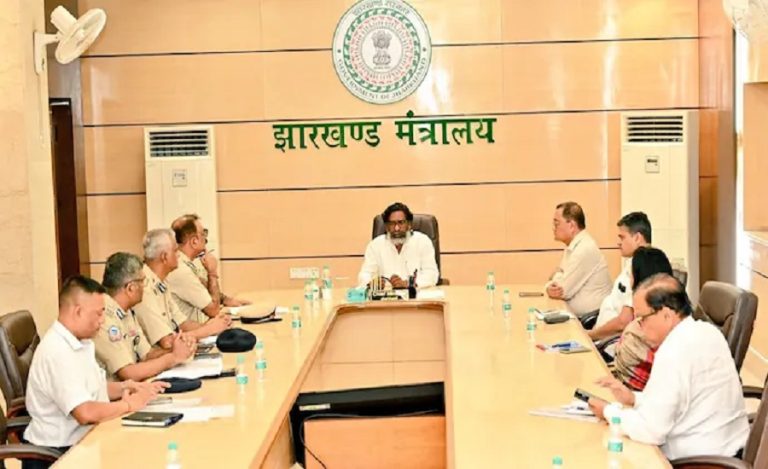New Delhi: In a decisive move this Monday, the Supreme Court of India issued a landmark order and directed Uttarakhand to carry out full restoration of ecological damage in the Jim Corbett Tiger Reserve. The bench headed by CJI B. R. Gavai emphasised that the damage caused by illegal constructions and tree felling cannot be ignored and mandated urgent action.
Background of Corbett Tiger Reserve Restoration
The case traces to long-standing concerns over unauthorised building activities, illegal tree felling and unsustainable tourism practices within the Jim Corbett Tiger Reserve.
Earlier, in 2024 the Court had flagged irregularities related to the proposed Pakhro Tiger Safari project, illegal constructions and tree-felling inside the protected area.
Read Also: Uttarakhand’s Forest Department Leads India’s Green Revolution with World-First Initiatives
Now, in this fresh order, the Supreme Court confirmed that such damage must be rectified, and that unauthorised structures demolished within a strict timeframe.
Key Court Directives on Corbett Tiger Reserve restoration
- Restoration of ecological damage – The state of Uttarakhand is directed “to restore and repair the ecological damage caused to the Corbett Tiger Reserve.”
- Demolition of unauthorised structures within the tiger reserve — to be completed within three months under supervision of the court-appointed Central Empowered Committee (CEC).
- Compliance with tourism rules – Any tiger-safari inside the reserve must follow the 2019 rules of the National Tiger Conservation Authority (NTCA). Rescue centres close to safaris must be established and the number of vehicles regulated.
- Conservation plan – A detailed tiger conservation plan must be prepared within three months.
- No outsourcing of staff functions and incentives such as medals for frontline staff to encourage better protection measures.
- Stakeholder engagement & religious tourism regulation – The Bench directed that human-animal conflict mitigation, religious tourism inside/near the core area, and local stakeholder involvement should be addressed.
Key Importance & Implications of Corbett Tiger Reserve restoration
This judgment holds major significance for wildlife conservation and legal accountability in India:
- It reinforces the doctrine that protected areas cannot be traded off for commercial development.
- Sets a precedent for ecological restoration, including tree felling compensation and rebuild of damaged ecosystems.
- Puts eco-tourism under sharper legal scrutiny; only permissible if genuinely sustainable and compliant with NTCA norms.
- Sends a strong message to state governments; unauthorised constructions inside protected zones will trigger court intervention and demolition orders.
- Impacts local economies reliant on tourism; regulation of safari vehicles and infrastructure may change how visitors experience the reserve.
Key Challenges Ahead
Implementation risk: Demolishing unauthorised structures in tough terrain and verifying compliance within three months is a big operational challenge.
Resource allocation: Ecological restoration, rescue centres, staff incentives—all require state budget and capacity.
Balancing tourism and conservation: Ensuring eco-tourism thrives without hurting biodiversity is a delicate act.
Monitoring and enforcement: Ensuring that the CEC oversight is active, and that local forest authorities comply transparently.
Human-wildlife conflict: Elevated by tourism, religious access and deeper human penetration into fringe areas—needs proactive management.
Way Forward
- Uttrakhand must firm up an action plan immediately: Mapping illegal structures, setting timelines, allocating funds and human resources.
- Establish monitoring mechanisms: The CEC-supervised plan must publish periodic updates and invite independent audits.
- Focus on community engagement: Include local village stakeholders around the reserve, use local knowledge to mitigate conflict.
- Launch a sustainable eco-tourism strategy: Limit vehicles, provide strict quotas, ensure infrastructure is minimal impact.
- Invest in wildlife rescue & rehabilitation facilities near safari zones as mandated.
- Strengthen legal accountability: Officers or private parties responsible for illegal felling and constructions should face action and cost recovery where feasible (as earlier ordered in 2024).
- Foster environmental awareness campaigns: Visitors, tour operators and local residents need to understand the fragility of the Tiger Reserve ecosystem.
Read Also: Big Setback for Govt Staff: Supreme Court Says Repaying Misused Funds Won’t Save You From Dismissal



























